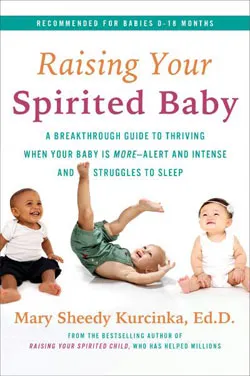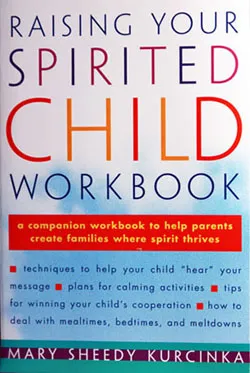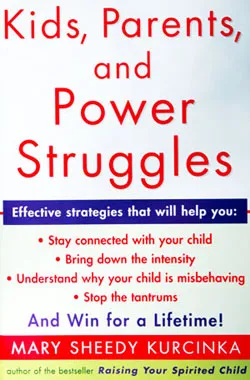How Do I Help My Baby Take Good Naps?

What to Do When Your Baby Catnaps.
Why do some babies sleep anywhere, and for hours at a time, while others catnap in mere twenty-minute segments and only when held? When your infant seems to fight sleep, you cannot help wondering if the parents of the “sleepers” know something you don’t. And after struggling for months to get your baby to nap, you may speculate he doesn’t need as much sleep as his peers, and as a result give up, and just let him go until he crashes. But naps are crucial for regulating the arousal system, especially for our spirited babies who by their very nature are more alert, intense, and energetic. Over-tired babies struggle to feed or sleep well, nor do they cheerfully engage. That’s why it is essential to know the secrets to helping even our most alert and perceptive little ones to shut down and sleep.
Tips to Successful Naps
1. Start with the morning wake time.
You do not wake your baby but allow the sounds and activities of your family to cue your baby that this is the time your family’s day begins. Soon your baby will naturally begin to awaken at this time too. The consistent wake time establishes a baseline to predict when your baby will need that first nap.
2. Identify your baby’s sleep cues.
If you are attempting to put a crying, arching baby to sleep, your infant is over tired. When you catch your baby’s window for sleep you are putting down a happy baby! There are three levels of sleep cues. Babies under nine months of age show very subtle cues, a turning away from eye contact, red around the eyes, slight sagging of cheeks, momentary slowing of motion, or a burrow into your neck. These cues signify your baby is ready for sleep. Watch closely. Babies under six months of age, may be ready for their first nap a mere 45 to 75 minutes after awakening. For babies over nine months the stage one cues are a heads-up I’m getting tired. Wait until they shift to the yawn, become slightly irritable – but not crying – rub their eyes, seek contact, or seem bored, then put them down.
3. Make the first nap a priority.
The first nap protects your baby from overarousal for the entire day. Fortunately, it is often the most predictable one making it easier to catch and help your baby sleep. Without that nap, your baby begins to spiral into over tired, and becomes more difficult to settle for sleep later in the day. It is true. Sleep begets sleep.
4. Calm yourself.
Naptimes may be fraught with stress. Will your baby sleep or is this a futile effort, that once again leaves you feeling like a complete failure? Your baby synchronizes to your stress level. BEFORE you pick up your baby, calm yourself. Take a few deep breaths. Tell yourself, “If he sleeps, he sleeps, if he doesn’t, we will try again later. It’s not a reflection on my skill as a parent.”
5. Help your baby shut down for sleep.
Highly active, alert babies flail, buck, twist, and kick even though they are tired. The more they thrash the more dysregulated they become. If this describes your baby, wrap a light blanket around her, tucking her arms and legs tightly against your body. Drape another light blanket over your shoulder with her tucked inside – make certain she can still breathe easily. Initially she may protest, talk to her calmly saying, “I know you were having such a good time, but now it’s time to sleep.” Continue to hold her against your body, gently sway back and forth. Add a shhh shhh shhh. The protests will stop as she drops into sleep and you will realize this is just what she needed. Remove the blankets before you lay her down. This technique can also help active toddlers sleep.
6. Honor where you baby sleeps best.
Babies’ sleep is more important than where they sleep. Some babies need full body connection to sleep well. The moment contact is broken their eyes open. If your baby sleeps best when held, hold her. Do not worry that she will never sleep on a non-human surface. She will. Slowly you will build her capacity to sleep independently but for now, start where she is a rock star and let her get the sleep she needs.
7. Develop your baby’s nap skills with a Gentle NUDGE.
Despite what you read; sleep habits are NOT established by four-months of age. It is a process that often takes eighteen months or longer. You can, however, build your baby’s skills by implementing the Gentle NUDGE method. First note where your baby is now. Can she transfer from arms to a sleeping surface? If not, you’ll begin practicing the transfer motion during playtime – not at naptime. Does she sleep in her crib for twenty minutes then wake? If so, you’ll place her in the crib, set your phone alarm for 17 minutes, and be at her bedside when she first starts to awaken. By catching her before she is fully awake, you can often help her return to sleep. The advice to wait and allow to see if she will self-soothe does NOT work for spirited babies. Instead, get there fast, offer reassurance, pat and if needed pick her up. Practice is over. Help her return to sleep and hold her for the remainder of the nap. Do not attempt to lay her down again. But the next day, or the next nap, lay her down again. Gradually she will begin to sleep longer in her crib. Until then the top priority is her sleep – not where she sleeps.
For more information:
Grab a copy of "Raising Your Spirited Baby", by Mary Sheedy Kurcinka, Ed.D. Available from all booksellers and Amazon.
Display All Posts
Search by Topic:
Popular Posts:
- When your child yells at you: Expecting and Coaching respectful behavior
- 5 Tips to Stop the 'Strike out Tantrums:' Hitting, Biting, Kicking and Name-calling
- Why is my child suddenly clingy?
- Ten Steps to a Peaceful Bedtime for Your Spirited Child
- When Your Child’s Meltdowns Might Ruin Vacation






